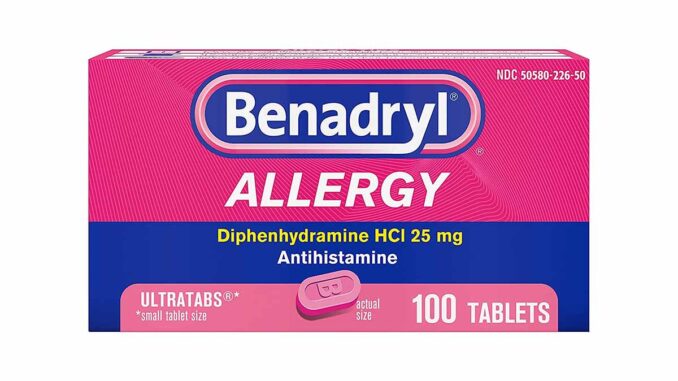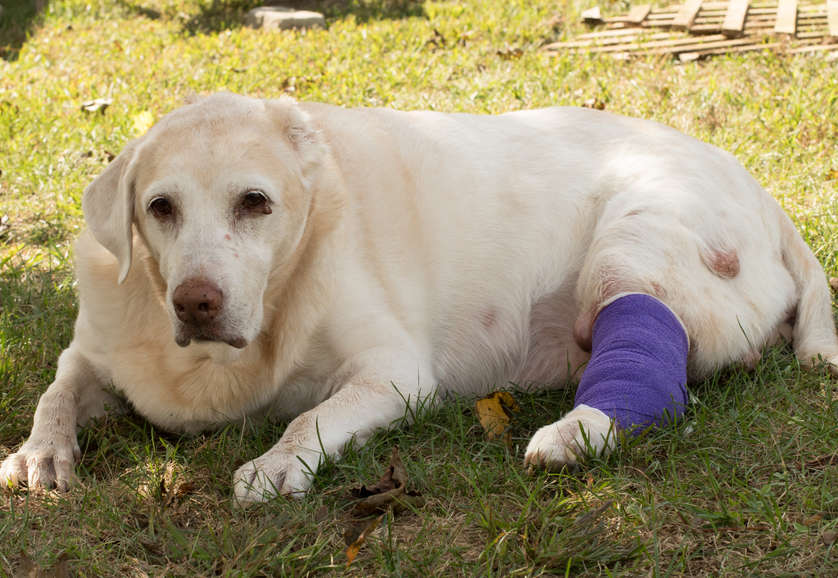
It is always worrying to feel a new lump or bump pop up on your dog. Some are very slow-growing, and others seem to come up overnight. Some look angry and inflamed, others just look like small bumps under the skin. As pet owners, we worry about any new growth and the potential for cancer.
As veterinarians, masses and skin tumors are part of our everyday schedule, but each one can be a little different to diagnose and treat. One of the more concerning skin tumors we see is the mast cell tumor, a common malignant skin cancer in dogs.
These tumors can be unstable and cause inflammation and redness even with gentle handling so can be quite scary for dog owners to receive this diagnosis about their canine companions. Because of the unstable nature of this type of tumor, your vet will usually want to remove it as soon as possible to help prevent further complications.
Benadryl and other antihistamines can help lessen some of these symptoms that can make your dog miserable. A surgical cure is possible as long as the tumor is completely removed; this process can be difficult though since these tumors often invade deeper tissues and spread like tendrils.
What is Benadryl?
Benadryl is the brand name for the antihistamine called diphenhydramine. That’s a lot of big words – let’s break that down a bit.
When your dog’s body encounters an allergen it will automatically take steps to try to get rid of this foreign invader. Histamines are natural compounds in the body that help mount this immune response and are responsible for many of our pets’ allergy symptoms. They are stored in special cells in the body called mast cells; these mast cells are found in most tissues but are most common in the intestinal tract and skin.
So an antihistamine is a type of medication that blocks histamine receptors, so histamine cannot bind to its target tissues. This helps prevent the effects of histamine. In the skin, that includes localized redness, itchiness, and swelling.
Where does Benadryl fall in this histamine and allergen battle? Most drugs have generic and brand names – your pharmacist, doctor, and vet are often familiar with both names, but you probably know medications by their brands. Benadryl is the brand name for diphenhydramine (its generic name) – they are the same medication!
What are mast cell tumors?
Mast cell tumors are the growth of many mast cells that have replicated uncontrollably and are one of the most common malignant skin masses seen in dogs. As many as 1 in 5 diagnosed skin cancers in dogs are mast cell tumors. They release histamine granules at inappropriate times, like when the mass is handled or touched, or even at random.

This histamine release by the mast cell tumor often leads to itchiness, swelling, and redness, but can also cause vomiting and intestinal ulceration.
Why use Benadryl for dogs’ mast cell tumors?
While Benadryl is not going to treat or cure the mast cell tumor, it plays an important role in alleviating some of the side effects of histamine release like redness and swelling at the tumor site.
If your vet evaluates your dog’s skin and suspects a mast cell tumor, they will want to perform a fine needle aspirate, or FNA, to help determine the type of tumor. This is a simple test where a small needle is stuck into the mass in order to remove some cells to look at under the microscope. This does not always give a definite diagnosis, but can be a critical first step in making a treatment plan.
Benadryl may be given prior to an FNA to help prevent local degranulation, or the sudden histamine release that can cause redness and swelling. Your vet will either instruct you to give it at home prior to your dog’s appointment or they will give an injectable version in the hospital.
After your dog has been diagnosed with a mast cell tumor, the next step is usually surgery to remove it; your vet may start your dog on Benadryl prior to surgery at this time also. Histamine is constantly being released from the tumor and causing significant inflammation in the body. This may vary from localized swelling, itching, and redness, to vomiting. Benadryl helps prevent some of these symptoms. There are other antihistamines that target gastrointestinal side effects as well. Your dog’s medications will be tailored to his situation and symptoms.
If the tumor has been completely removed during surgery (what your vet describes as clean margins), then your dog typically does not need to continue taking Benadryl unless more mast cell tumors develop.
How do you administer Benadryl?
Most people are familiar with oral forms of Benadryl (chewable, tablets, and liquid), but there is also an injectable form that your veterinarian might use in the hospital. Typically Benadryl is given every 8-12 hours.
The best way to determine a dose for your dog is to work with your veterinarian. They will have an accurate weight and dosage for your dog’s specific needs. It is also important that you get the form that only contains Benadryl, not any other medications like decongestants or Tylenol, and is NOT a slow-release formulation.
Benadryl is generally considered very safe for dogs. Mild side effects include sedation, ataxia or clumsy walking, and some behavior changes. Overdose may result in blood pressure abnormalities, seizures, and respiratory depression. If you are concerned about any side effects you are seeing in your dog after taking Benadryl, talk to your veterinarian about other options.
The diagnosis of a mast cell tumor in your dog can be a scary thing, but controlling the symptoms that make your dog feel bad can be a big step in improving his quality of life.
Disclaimer: This website's content is not a substitute for veterinary care. Always consult with your veterinarian for healthcare decisions. Read More.


Be the first to comment